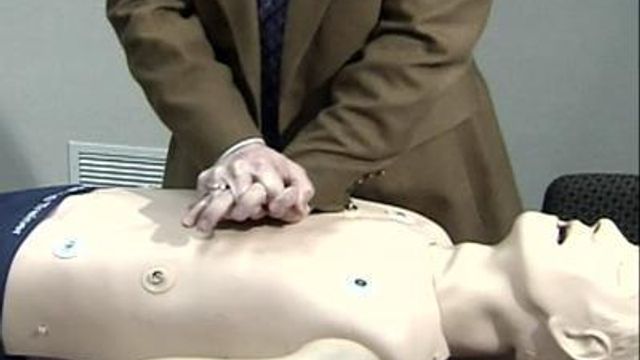Health Team
CPR Without Rescue Breathing Better For Heart Attack Victims
A new study could take the air out of CPR.
Posted — UpdatedAn unconscious heart attack victim's chance of survival drops seven to 10 percent every minute without cardiopulmonary resuscitation, but many experts claim people can leave the rescue breathing out of it.
Now, research suggests that if people only do chest compressions when a person is in cardiac arrest, it could save more lives.
Millions of people learned to give CPR by giving 30 chest compressions followed by two rescue breaths. Health experts say mouth-to-mouth resuscitation is meant to supply oxygen to the brain.
"What we now know is that the blood has enough reserve oxygen in its supply for a 4- to 8-minute time frame," said Wake County Medical Director Dr. Brent Myers.
Myers said for the past two years, Wake County 911 operators have told callers to use the "compressions only" technique.
"We have seen a doubling in the number of patients discharged home from the hospital neurologically intact since we did just the simple change," he said.
If a person is unconscious, call 911, then tilt the head back and give two breaths to make sure the airway is clear.
Then, with the heel of the hand in the middle of the breastbone, start compressions. Don't stop doing compressions until help arrives.
Health experts say dropping the breaths make each compression more effective, because every time a person stops to breathe, it takes another five compressions before they are effective again.
Not all emergency service agencies, however, use the compression-only method.
The American Red Cross, for example, still trains people to use rescue breathing (two breaths) along with 30 compressions. It maintains that someone properly trained in CPR is still the best way to help someone in need.
• Credits
Copyright 2024 by Capitol Broadcasting Company. All rights reserved. This material may not be published, broadcast, rewritten or redistributed.





